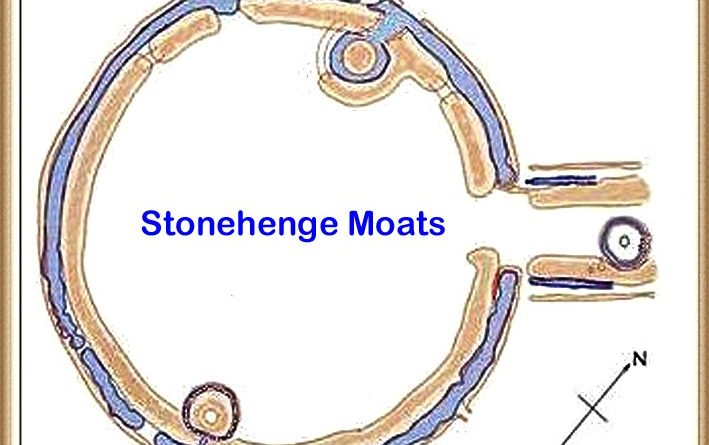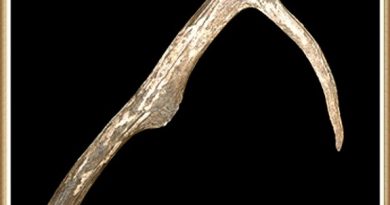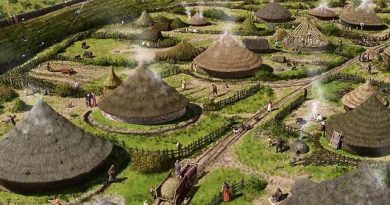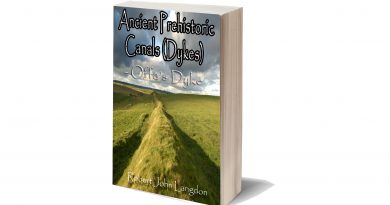The Stonehenge Hoax – Station Stones
Conundrum 10 – Station Stones – extract from The Stonehenge Hoax Book
Was it an astronomical observatory?
The Problem
In recent years the idea of Stonehenge as an astronomical observation point has become very popular with the ‘new age’ cult that looks at the stones as a ‘magical’ monument rather than a practical, functional site as the archaeologists fail to identify the exact reason and purpose successfully was built. So these ‘ideas’ have flourished to fill the void created by the ‘experts’ as they stutter for explanations. Within this new age, the theory is the Station stones’ role that seems to line up with more astrological occurrences than the leading site.
The Solution
The two Station Stone features found on the Stonehenge site are situated on the North West and South East side of the main monument within the ditched circle – both have individual moats surrounding them. This can be seen clearly in the Station Stone in the North West, also known as WA3595 (North Mount), discovered in 1956 (Atkinson et al.,1956). Where Atkinson observed that ‘a small gully running East-West appears to lie beneath the rubble and earth bank’.
This indicates that the gully was a connecting strip, linking the main henge moat to a smaller moat surrounding the North West Station Stone. It wouldn’t be an unrealistic suggestion that the southern Station Stone was also connected to the main moat. If we believe traditional archaeologists’ commonly held view that the moat surrounding the central monument at Stonehenge was constructed purely as a landscape feature, why would our ancestors connect the two smaller ditches to the main one?
The heel stone also has a ditch indicating its significance. This ditch is almost bisecting the avenue ditch, which would have also been full of water. These ditches are invisible today as they were filled in long ago when the water left the site – but if the Moat and channels were not for water but symbolic purposes, why were they left to fill with soil and disappear from view – it makes no sense unless they are water features that have dried up over the years as the water table has now fallen by 30 metres?
Hawley and Atkinson, both suggested that they were built at the same time “The ditches of the North and South Barrows are suggested as belonging to this phase (Phase 3b) purely on their resemblance to the Heel stone ditch, an observation made by Professor Atkinson(1978,78).” (Cleal et al., 1995,274).
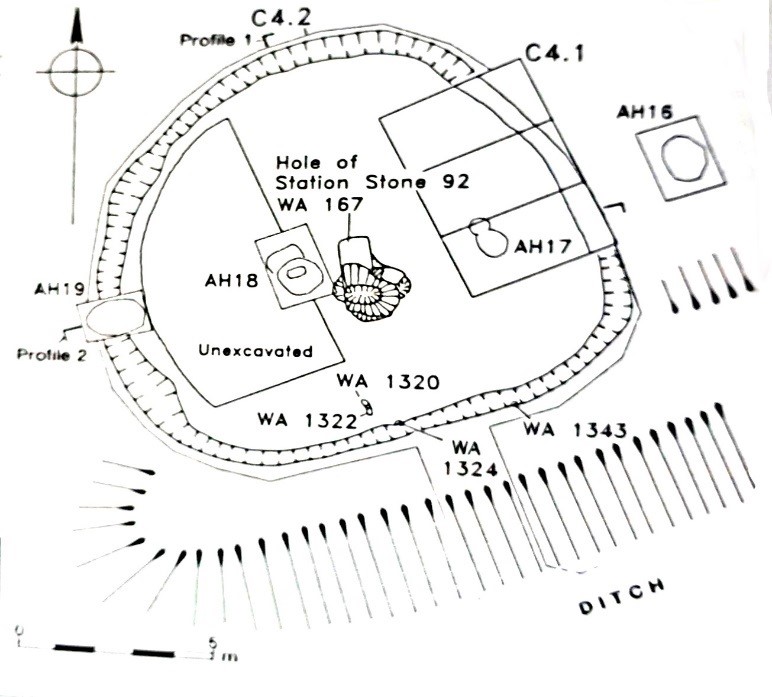
The North and South Station stones and the Heel stone ditches are of considerable depth 1 – 1.2m deep. Symbolic ditches are needed only to cut the surface to meet their requirements. These ditches are full of ‘silt’ or ‘marl’ in all cases. Moreover, it is possible that the same clay liner was added to these features as the excavation reports various anomalies that are unexplained and what I see as evidence of water in the ditches. “There were about 18 inches of dirty chalk upon the bottom… between this, and the humus is a layer of humus with flint single… apart of a decayed horn pick and some flint chips were found on the bottom silt” Hawley (Cleal et al.,1995,278).
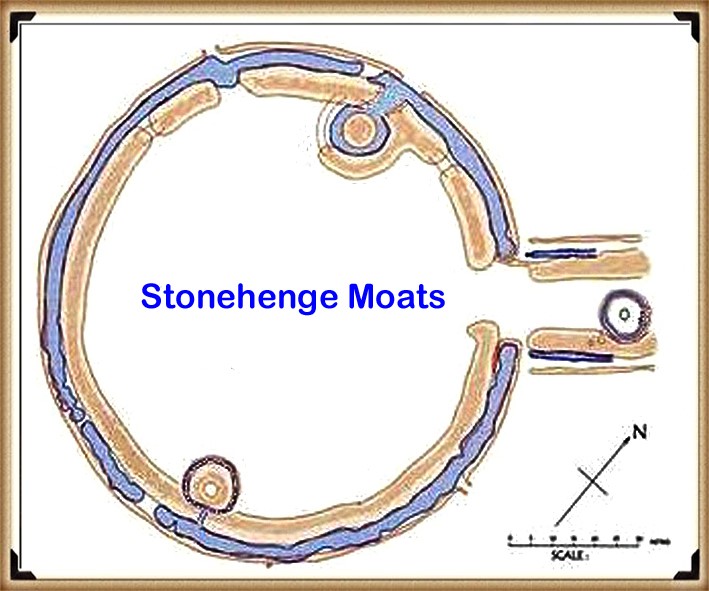
In his 1979 – 80 (C91) excavation, Pitts also found this water deposit, where he observed “chalk intermixed with periglacial marl which covers all of the bottom and moat of the sides…. Natural silting of the greater part of the ditch is acceptable” – this indicates that this was left to silt over time and only filled when the Avenue fell into disuse and the original stones were moved.
At the end of the Neolithic Period, the groundwater had subsided to almost their present levels. Since the great Ice Age melt, the large river that had existed at Stonehenge’s bottom for 5,000 years was gone. The groundwater that once covered the land had moved to the surrounding seas and channels, flooding the island once called Doggerland and leaving it 30 metres under the sea. The moat had dried up at Stonehenge, and consequently, the tools used to clean out the moat in the past (antler picks) were left where they broke in the ditch. Sadly, archaeologists currently take these tools as the basis for their incorrect dating of the site, not when the monument was at the height of its power, but when it was last used as a monument to the dead.
The Station Stones (with mounds) seem to have been added later in the site’s development. This can be seen as the introduction of the Station Stones would have obscured the Aubrey post holes; therefore, they must post-date the original Bluestone circle but predate the infilled moat, as they have moats of their own. We currently don’t know whether the knowledge of the tides was no longer necessary or if the station posts held another particular purpose.
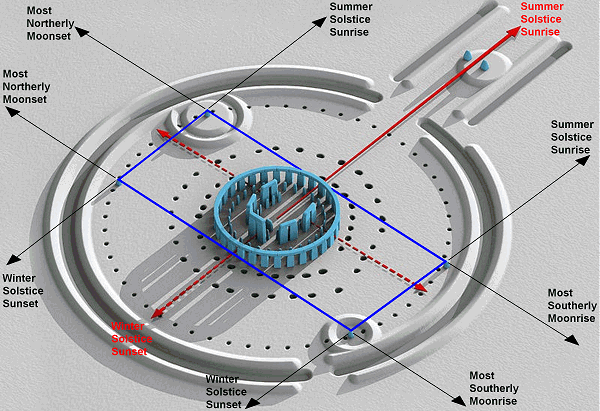
Modern theories use astroarchaeology alignments based on these posts to speculate on the reasons for their existence. Unfortunately, only two of the four Station Stones have a mound and moats, which does not make sense if they are as crucial as these theorists believe. Our ancestors-built round barrows as signposts, not burial mounds. These markers are aligned to show where to go and, more importantly, how to get home.
If you lived in the countryside or became a fell-walker in the days before GPS and OS maps, you used to rely on points on the horizon for guidance. A prehistoric person would have used the same simple principle to get from A to B without getting lost. Initially, these features would have been on islands, as people used boats to transport themselves and trade. Then, as the groundwater fell, they would have used barrows as markers on the horizon to walk from point to point. We still see milestones today on the side of roads; barrows were the milestones for prehistoric societies.
If you follow the line from the centre of the site through the Northern Station Stone, you will go past no less than five long barrows, 15 round barrows, Casterley Camp, Knap Hill Camp, and the White Horse, finally arriving at Avebury. This is not bad, for just 36.4 km of travel. That’s one barrow every 500 metres; not even I could get lost with that marker frequency. Mathematically, the chance of this number of barrows being in line over such a small distance is less than half of one per cent (0.05 %), or 2000 to 1 in layman’s terms.
The Southern Station Stone points the way to Old Sarum near Salisbury. Although it is famous for being the site of the original Salisbury Cathedral, archaeologists have also found evidence of flint tools dating back to 3000 BC. We believe that there is a clear indication that Old Sarum was first used in the Mesolithic Period when it was an island above the raised groundwater level and that (as in many cases) later sites were built upon the location of this original construction.
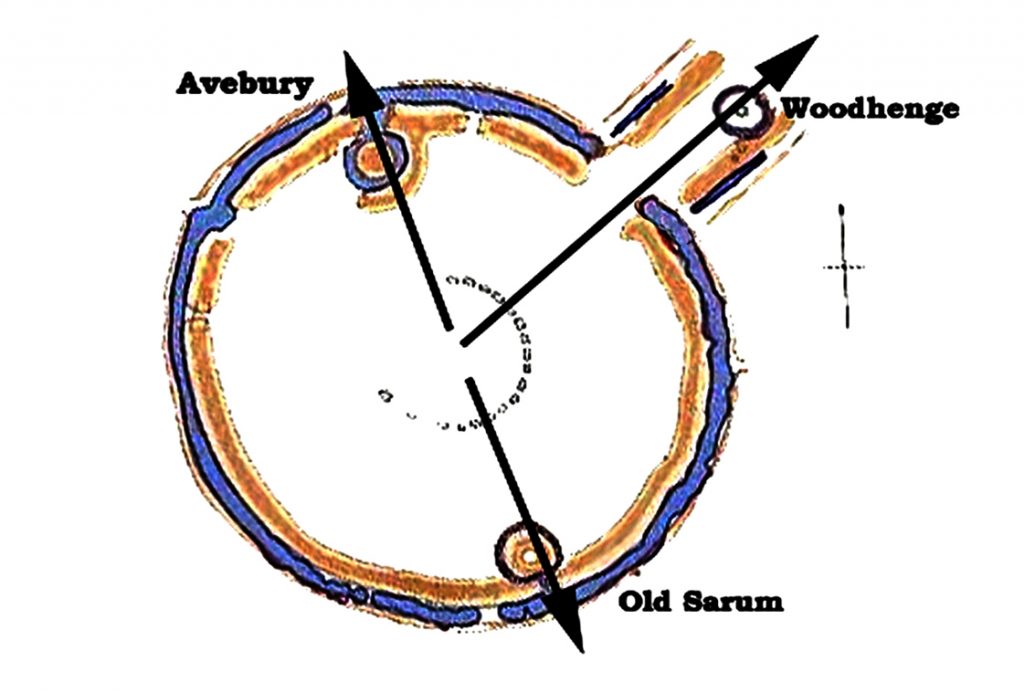
The most interesting of all the original markers at Stonehenge must be the Heel Stone. The Heel Stone is slightly right of centre in the Avenue and, like two of the Station Stones, it has its moat. If we line ourselves up with the Heel Stone from the centre of Stonehenge, it aligns with Durrington Walls and Woodhenge. These three places would have been not only essential neighbouring sites to Stonehenge but a gateway to other sites and trading places in the ancient world. Next to each of the moated Station Stones, a gap was left in the Moat to allow people to cross by the stone in the direction it indicated. This no doubt led the walker along a path, now lost to us 5,000 years later, via a system of barrows, to the desired location.
For more information about British Prehistory and other articles/books, go to our BLOG WEBSITE for daily updates or our VIDEO CHANNEL for interactive media and documentaries. The TRILOGY of books that ‘changed history’ can be found with chapter extracts at DAWN OF THE LOST CIVILISATION, THE STONEHENGE ENIGMA and THE POST-GLACIAL FLOODING HYPOTHESIS. Other associated books are also available such as 13 THINGS THAT DON’T MAKE SENSE IN HISTORY and other ‘short’ budget priced books can be found on our AUTHOR SITE or on our PRESS RELEASE PAGE. For active discussion on the findings of the TRILOGY and recent LiDAR investigations that is published on our WEBSITE you can join our FACEBOOK GROUP.

